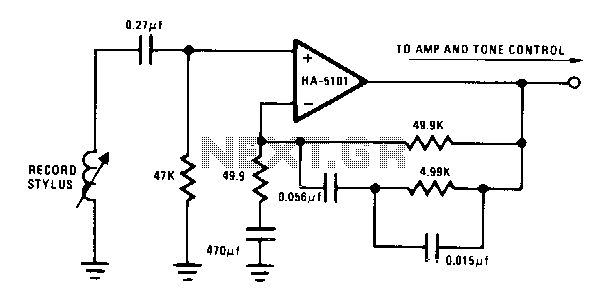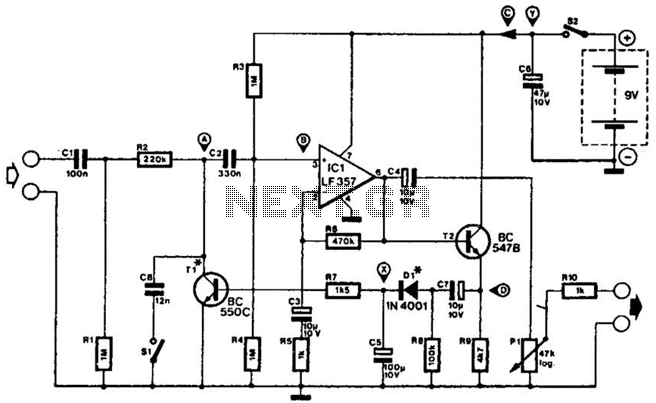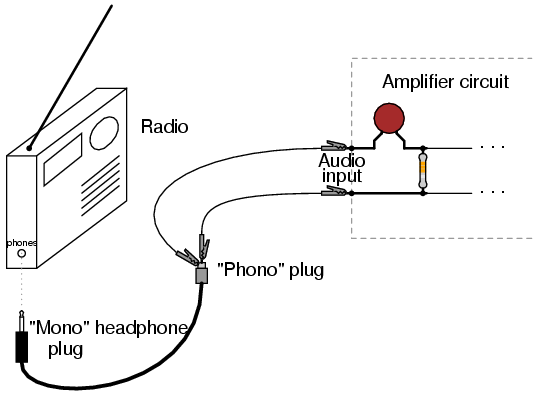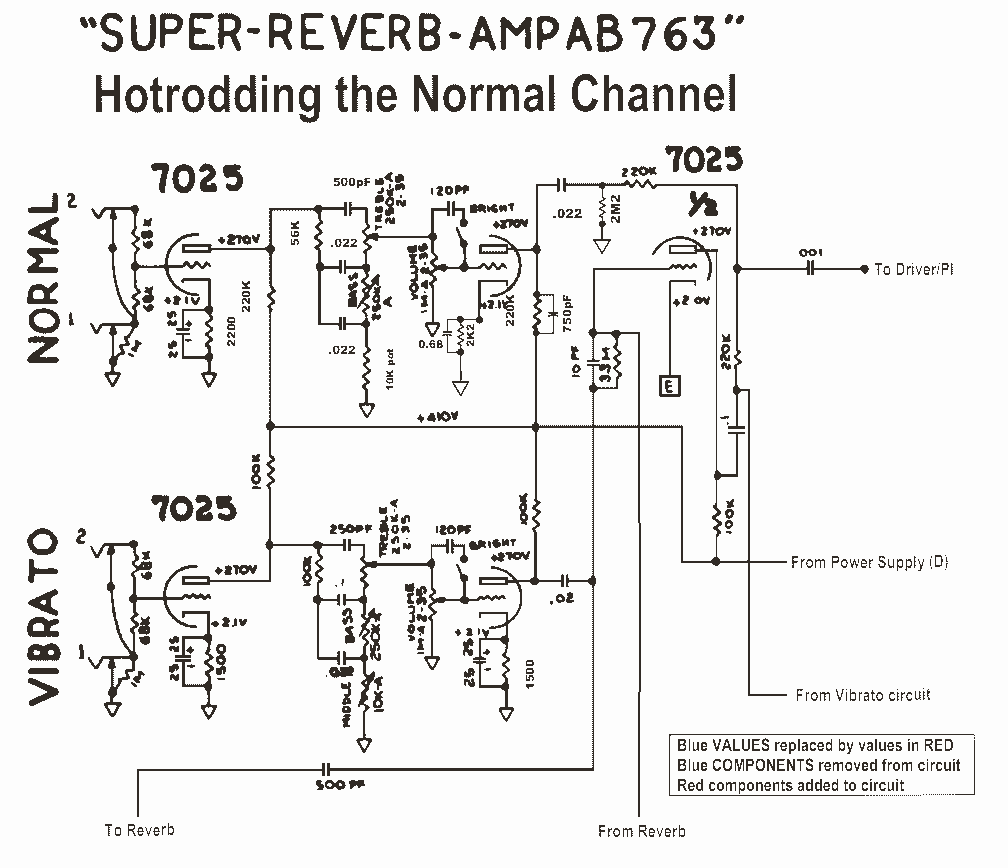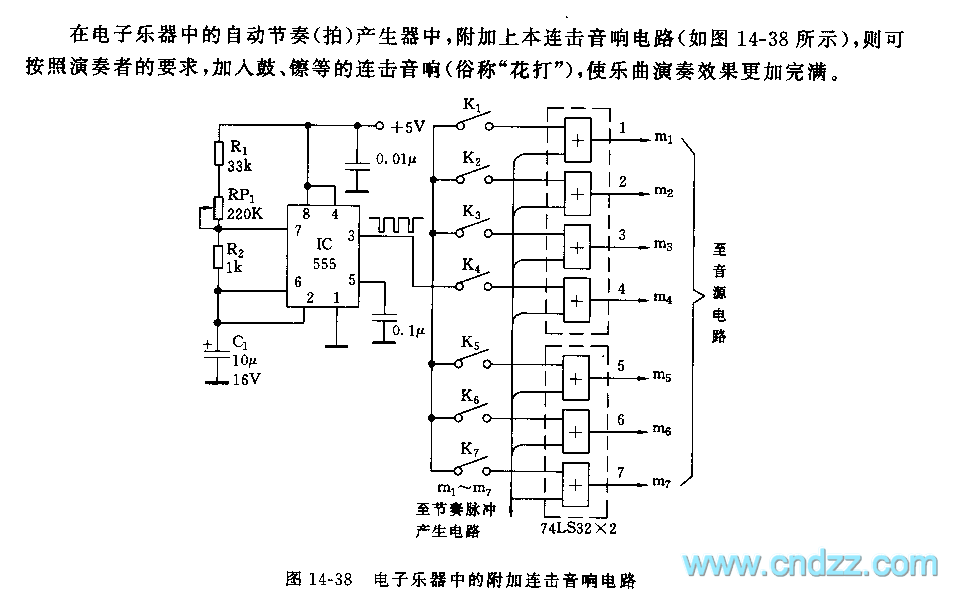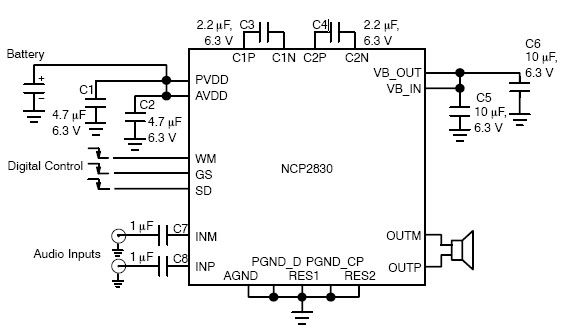
Class A-Designed Symmetrical Audio Preamplifier
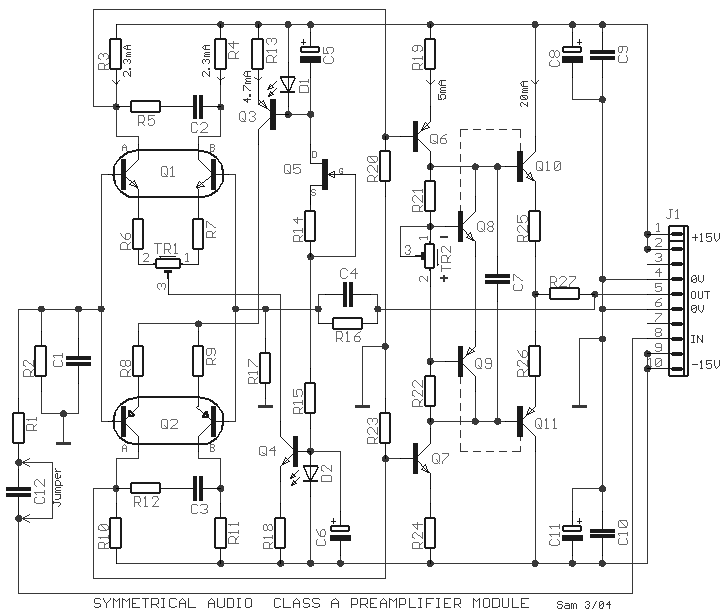
The circuit was designed to produce a preamplifier with symmetrical audio input while the output operates in Class A type. Preamplifier (pre-amp) a device...
The circuit in question is a preamplifier designed to handle symmetrical audio inputs, which ensures that both positive and negative halves of the audio signal are amplified equally. This is particularly important in audio applications where signal integrity and fidelity are paramount. The output stage of this preamplifier operates in Class A mode, known for its high linearity and low distortion characteristics, making it ideal for high-quality audio amplification.
The schematic typically includes several key components: operational amplifiers (op-amps) for signal amplification, resistors for setting gain and biasing, capacitors for coupling and decoupling, and possibly a power supply section to provide the necessary voltage levels for the op-amps. The symmetrical input configuration may utilize differential input stages to reject common-mode noise, which is beneficial in maintaining audio quality.
In Class A operation, the output transistors conduct over the entire cycle of the input signal, resulting in a linear response that minimizes crossover distortion. This is achieved by biasing the transistors so that they remain in the active region at all times. The trade-off for this linearity is decreased efficiency, as Class A amplifiers tend to dissipate more power as heat.
Overall, the design emphasizes high fidelity and low distortion, making it suitable for high-end audio applications, such as in professional audio equipment or high-quality home audio systems. Proper thermal management and careful component selection are critical to ensure optimal performance and reliability of the preamplifier circuit.The circuit was designed to produce a preamplifier with symmetrical audio input while the output operates in Class A type. Preamplifier (pre-amp) a devi.. 🔗 External reference
The circuit in question is a preamplifier designed to handle symmetrical audio inputs, which ensures that both positive and negative halves of the audio signal are amplified equally. This is particularly important in audio applications where signal integrity and fidelity are paramount. The output stage of this preamplifier operates in Class A mode, known for its high linearity and low distortion characteristics, making it ideal for high-quality audio amplification.
The schematic typically includes several key components: operational amplifiers (op-amps) for signal amplification, resistors for setting gain and biasing, capacitors for coupling and decoupling, and possibly a power supply section to provide the necessary voltage levels for the op-amps. The symmetrical input configuration may utilize differential input stages to reject common-mode noise, which is beneficial in maintaining audio quality.
In Class A operation, the output transistors conduct over the entire cycle of the input signal, resulting in a linear response that minimizes crossover distortion. This is achieved by biasing the transistors so that they remain in the active region at all times. The trade-off for this linearity is decreased efficiency, as Class A amplifiers tend to dissipate more power as heat.
Overall, the design emphasizes high fidelity and low distortion, making it suitable for high-end audio applications, such as in professional audio equipment or high-quality home audio systems. Proper thermal management and careful component selection are critical to ensure optimal performance and reliability of the preamplifier circuit.The circuit was designed to produce a preamplifier with symmetrical audio input while the output operates in Class A type. Preamplifier (pre-amp) a devi.. 🔗 External reference
Warning: include(partials/cookie-banner.php): Failed to open stream: Permission denied in /var/www/html/nextgr/view-circuit.php on line 713
Warning: include(): Failed opening 'partials/cookie-banner.php' for inclusion (include_path='.:/usr/share/php') in /var/www/html/nextgr/view-circuit.php on line 713
